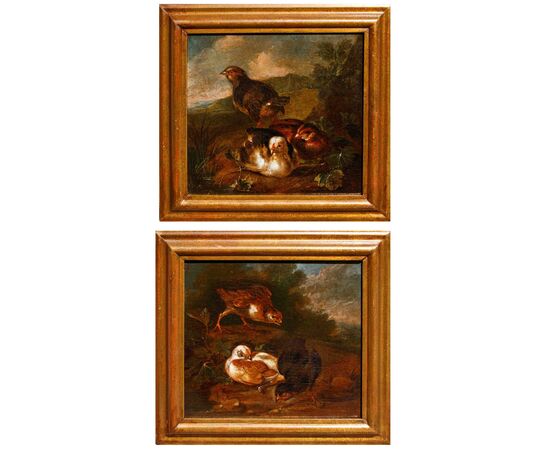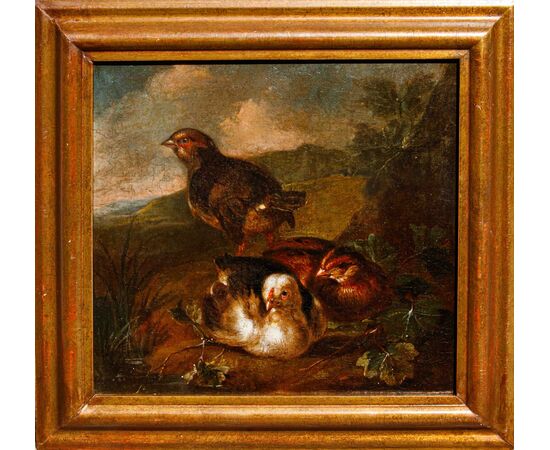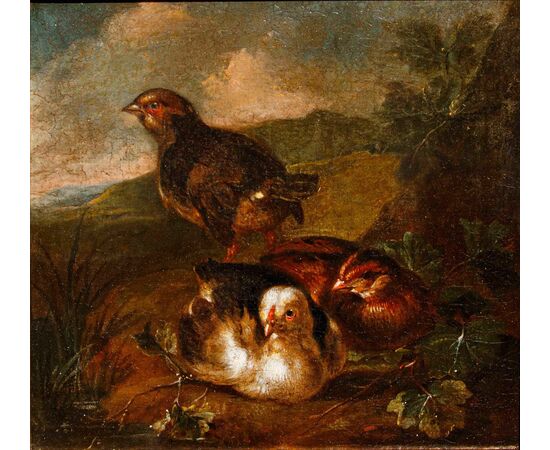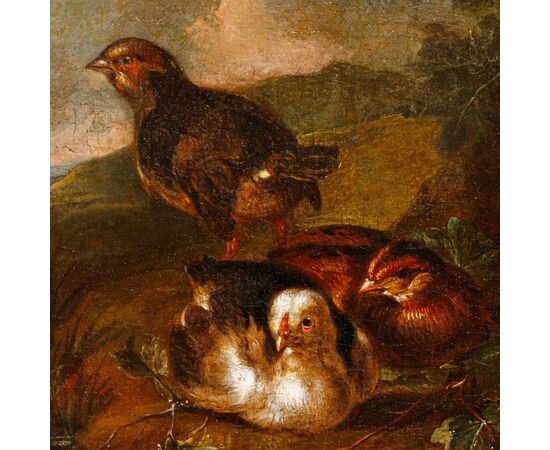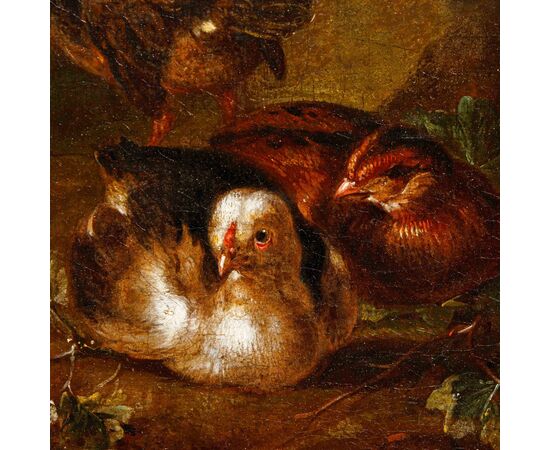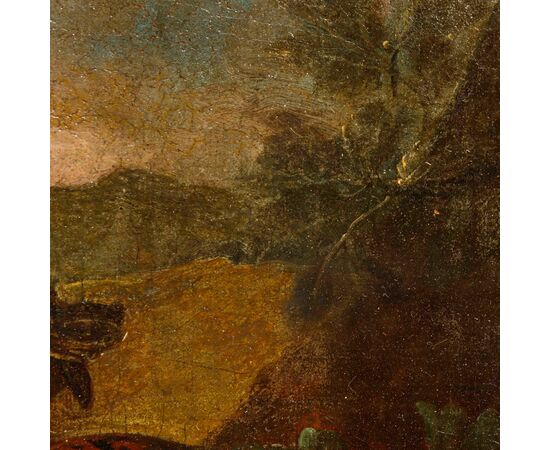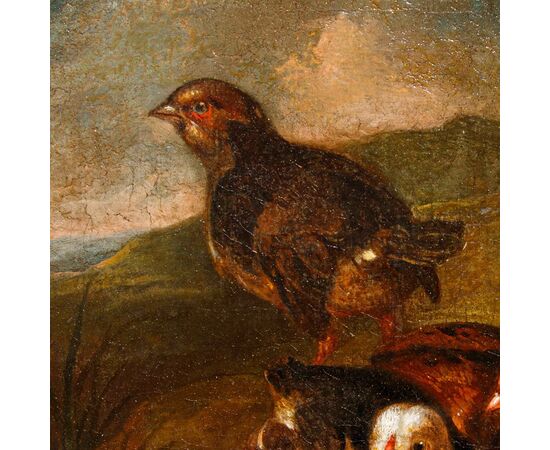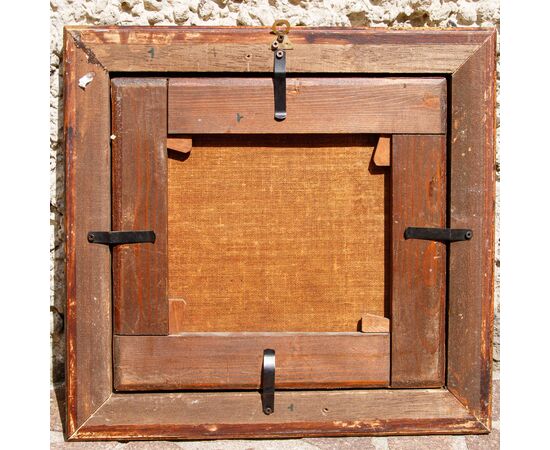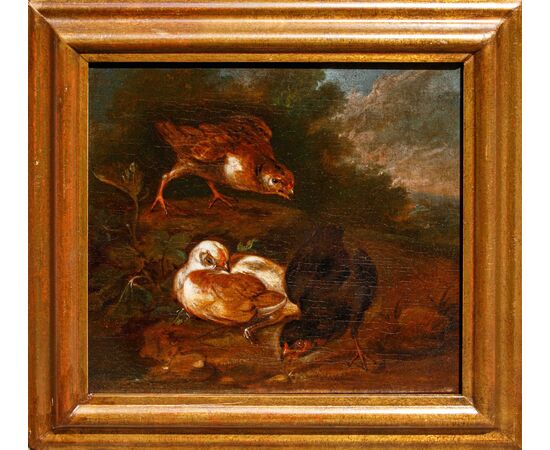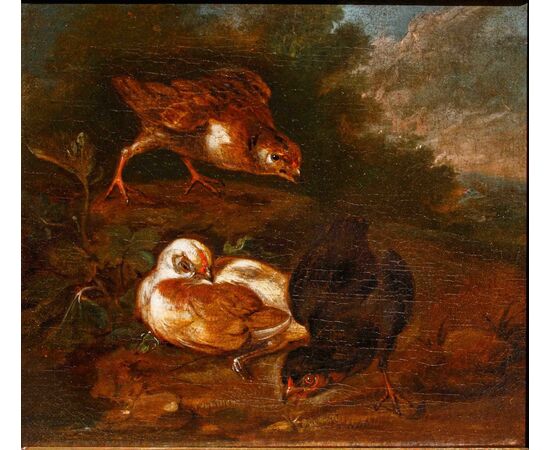Emilian school, 18th century, Pair of still lifes with birds
Emilian school, 18th century
Pair of still lifes with birds
Oil on canvas, 28 x 30 cm
Framed, 37 x 38.5 cm
As early as the 16th century, the North Italian school of painting developed a particular predilection for still life that vividly and virtuously investigated the subjects traditionally prevalent in the drawing repertoire; still lifes of animals thus preferentially presented creatures from the undergrowth, from the courtyard and from pastoral life. The tactile working of the pictorial matter had encouraged an ever-increasing predilection for aligning with the trends then coming from the Flemish countries; these characteristics can be found in the present pair of still lifes with birds, produced in the Emilian area in the first decades of the 18th century. In this beautiful pair of animalier paintings, a contingent of small-sized birds is presented according to paradigms of vivid realism. The figures, rendered through rapid brushstrokes, are distinguished by a marked dynamism, further emphasized by accentuated luministic touches. The works present analogies with the main exponents of the genre of still life between Lombardy and Emilia-Romagna in the first half of the eighteenth century, Angelo Maria Crivelli known as il Crivellone, Giovanni Crivelli, his son, and Giorgio Duranti. Angelo Maria Crivelli, better known as il Crivellone, and his son Giovanni Crivelli, known as il Crivellino, were two significant figures in the Lombard artistic scene between the 17th and 18th centuries, distinguishing themselves in particular for their skill in painting animals and hunting scenes. Angelo Maria Crivelli (circa 1660 – after 1730) was the progenitor of this artistic dynasty. Influenced by artists such as the Flemish Rubens and Snyders and the Neapolitan Ruoppolo, he learned the vivacity and naturalism typical of animalist painting of the time. His production is characterized by the expressive force and detailed rendering of the animal figures, often inserted in vibrant landscapes. He was highly appreciated for his ability to capture the wild essence and vitality of animals, making him a painter in great demand by the courts and aristocracy of his time, eager to decorate their residences with hunting scenes and subjects related to nature. Giovanni Crivelli (1691 – 1749) followed in his father's footsteps, inheriting and developing his style. The nickname "il Crivellino" suggests a continuity, but also a possible stylistic distinction, perhaps more minute or refined than his father's. He continued the family tradition in painting animals, hunting and still lifes, often in collaboration with other artists for the realization of human figures or landscapes. His work fits fully into the late Baroque and Rococo taste, with a predilection for more airy compositions and brighter colors than his father's darker and more dramatic palette.
Giorgio Duranti (Brescia, 1683 – Palazzolo sull'Oglio, 1768) was an Italian painter, active in the Baroque period, known mainly for his still lifes and, in particular, for the painting of animals. Duranti specialized in the representation of birds of all species, often depicting them alive and outdoors, with particular attention to the relationship between staticity and movement. His works, often characterized by stormy backgrounds, show a remarkable expressive force and a detailed rendering of the animal figures, making him a master of animalist painting of the 18th century. Many of his works, especially still lifes of flowers, were donated to the church of Palazzolo sull'Oglio and some were sold to the Spanish royal court. His artistic production, largely preserved in Brescia and its province, also included collaborations with other artists for the creation of landscapes or human figures in his compositions.

